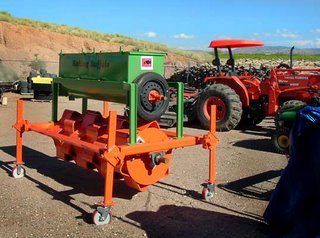 |
| Image by Юкатан |
Archeological evidence shows that Jordan had once been a green land. It is known that during the time of the Roman Empire, water harvesting features had existed in Jordan for the purpose of agriculture.
Unfortunately as has been the history of agriculture in most regions of the world, the practices of deforestation and overgrazing have created desolation.
The removal of trees results in a reduced capacity for soils to retain water. Trees increase local precipitation through condensation - this is precipitation that will not register on a rain guage. For example, upland slopes in coastal rainforests can account for up to 80% of the total precipitation. Removing the trees means that this precipitation will not be intercepted and drawn into the soil.
Additionally, trees transpire water into the atmosphere providing moisture for downwind rains. Cut out a forest and you will reduce the rainfall downwind.

Plough agriculture damaged the delicate soils contibuting to erosion. Today the land is characterised by wadis washed out of the hillsides - a telltale sign of serious erosion problems. This problem is compounded by overgrazing. Goats are currently stripping the vegitation off the land dooming it to become a totally dead environment.
Fifty years ago, 1.3 billion cubic metres of water flowed through the Jordan river. Today, less than one tenth that amout flows through the river, and this flow is kept alive by sewage. The remainder has been diverted for agricultural purposes.
To make up for shortfalls in water, aquifers are tapped. And without any attempts to recharge them, they are being depleted, dooming the inhabitants to a waterless future. Compounding this problem, modern industrial agricultural techniques are contaminating the aquifers with pesticides and fertilisers.
Despite this seemingly bleak future, there is a working solution: one that has been employed in the Jordan Valley. The next article in this series will look at the solutions that have been employed and their surprising results.







